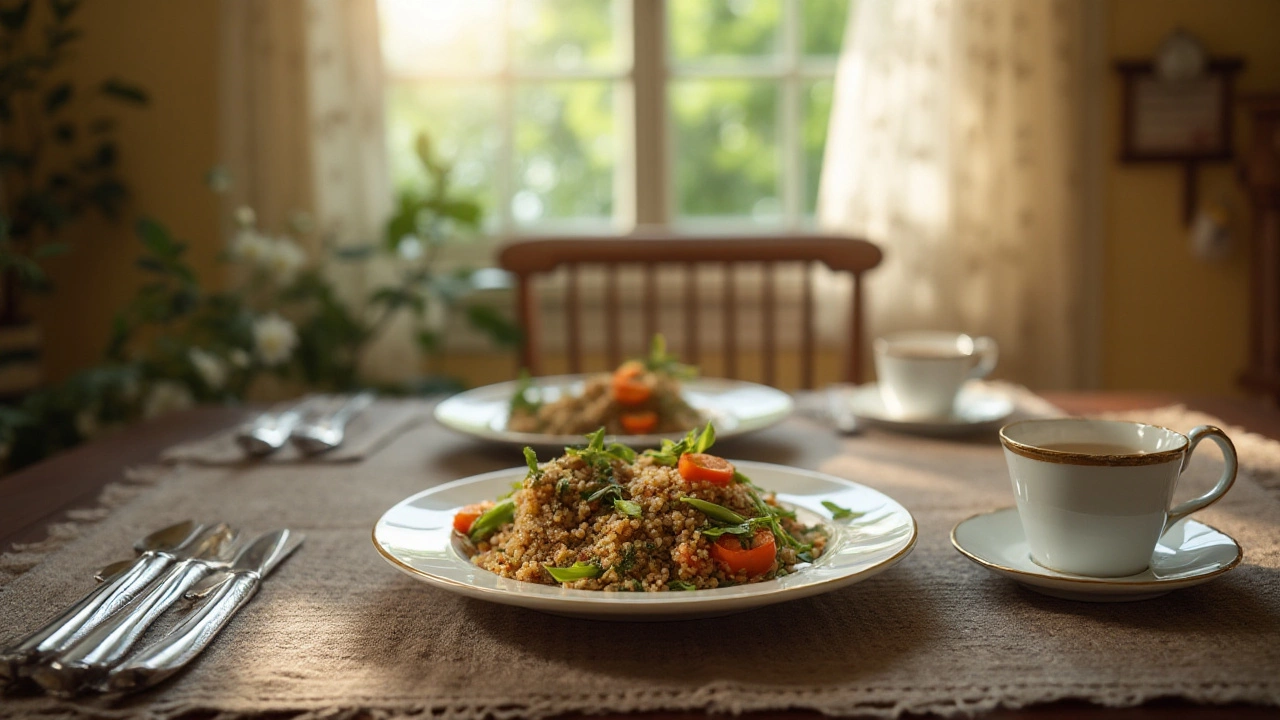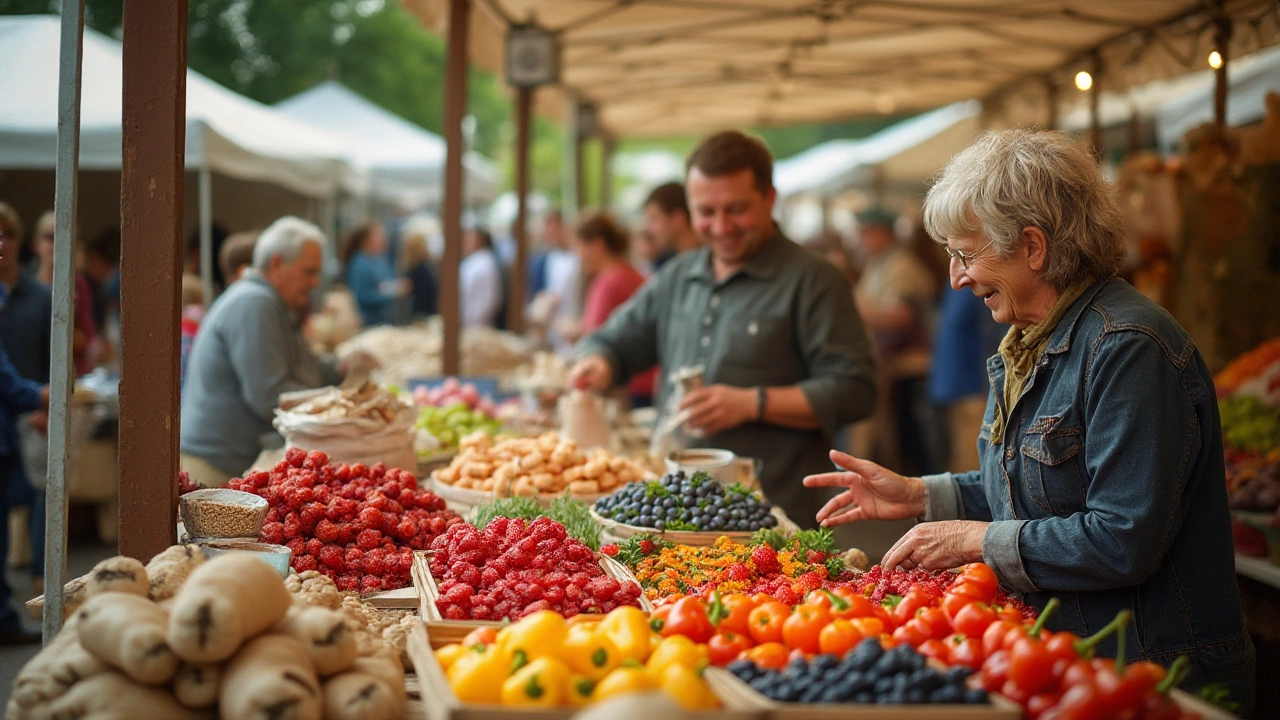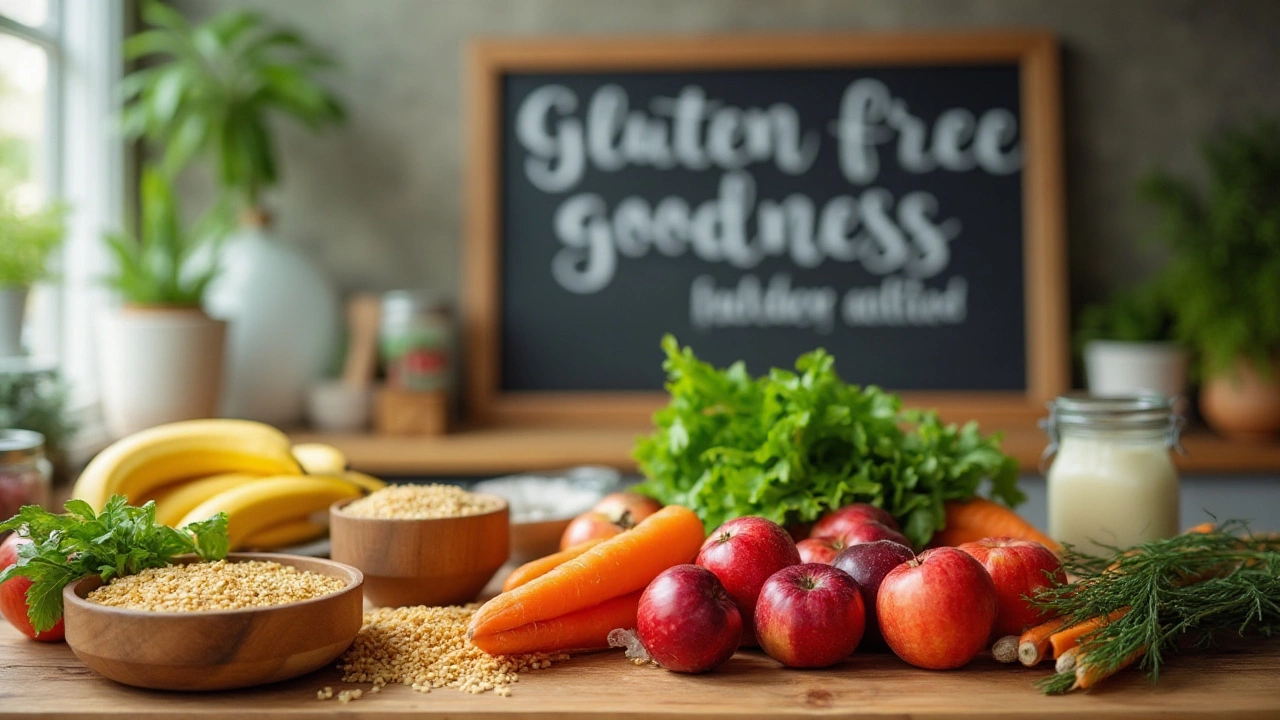Embarking on a gluten-free journey can often feel like navigating a maze of dietary restrictions and new ingredients. But fear not, as going gluten-free doesn't mean giving up on flavor or nutrition. In fact, there are plenty of naturally gluten-free foods that not only satisfy but also nourish your body.
For those with gluten sensitivities or celiac disease, understanding which foods to include in your diet is vital. This guide will introduce you to ten wonderful gluten-free foods that you can incorporate into your meals with ease. So, whether you're a seasoned gluten-free eater or just starting, these foods promise to be your pantry's best friends.
Nutrient-Rich Grains
Navigating the realm of gluten-free foods often leads us to the treasure trove of nutrient-rich grains, waiting to be explored and embraced. These grains not only cater to those seeking gluten-free options but also provide a myriad of health benefits that can enrich any diet. The star among these, perhaps, is quinoa. Often mistaken for a grain, quinoa is actually a seed loaded with essential amino acids, making it a complete protein—a rarity in the plant world. This pseudo-cereal is packed with iron, magnesium, and vitamin B6, all of which work to support metabolism, nerve function, and red blood cell production. Quinoa's versatility is unmatched, as it can seamlessly transition between breakfast porridges, hearty salads, and side dishes.
Another grain worth highlighting is brown rice, a staple in many gluten-free pantries. Its nutty flavor and chewy texture make it a delightful base for dishes ranging from stir-fries to stews. Brown rice excels with its high fiber content, helping improve digestion and providing a prolonged sense of fullness. While it's easy to overlook more traditional choices, millet is gaining popularity due to its mild flavor and nutritional profile. Rich in phosphorus and magnesium, millet contributes to bone health and energy production. Experiencing millet's potential can be as simple as substituting it for your morning porridge or using it to craft a crust for savory pies.
We mustn't forget about amaranth, an ancient grain beloved by the Aztecs. Its nutty flavor and weather resilience make it a sought-after choice. Amaranth is a solid source of calcium, making it ideal for those who avoid dairy. It’s also abundant in squalene, a potent antioxidant known for skin benefits. Incorporating these grains can significantly enhance your gluten-free meals, introducing textures and flavors that keep your palate excited and engaged. As with any dietary change, remember the words of nutritionist Kimberly Snyder:
"Eating the right foods is not about strict limitations. It's about feeling great, having more energy, and keeping yourself as healthy as possible."Embrace nutrient-rich grains, and you'll find them to be invaluable allies on your culinary journey.
Exploring Culinary Possibilities
Let us delve deeper into the culinary possibilities these grains present. Imagine a dish featuring roasted vegetables tossed with quinoa, drizzled with lemon-tahini dressing. The amalgamation of textures and flavors can make your taste buds dance. Consider also the humble millet muffin, a hearty alternative to traditional wheat options, offering both satiety and nourishment. These grains, when combined with legumes or nuts, can create complete protein-rich meals, sustaining energy levels throughout the day. For those on the lookout for something novel, try a fusion dish by pairing brown rice with coconut milk and tropical fruits for a dessert that whispers of distant shores.
Beyond the ordinary uses, brown rice and its relatives have a hidden talent in flour form. Employed as a base for gluten-free baking, they assist in crafting breads and cakes that rival their wheat-based counterparts. The challenges of maintaining texture and moisture in gluten-free baking are well-known, but these grains offer a solution. When you explore their offerings, you can conquer these challenges with grace. Whether you're an experienced chef or a home cook dabbling in gluten-free recipes, these grains remain steadfast in their ability to inspire and nourish.

Fruits and Vegetables
When it comes to maintaining a healthy gluten-free diet, fruits and vegetables are unmatched allies in flavor and versatility. Packed with essential vitamins, minerals, and antioxidants, they not only enhance any dish but also provide a crucial foundation for overall well-being. With a colorful variety to choose from, they ensure every meal is as exciting as it is nutritious.
Among the most celebrated gluten-free options are leafy greens like spinach and kale, which are full of iron, calcium, and a wealth of other nutrients. These greens can seamlessly fit into salads, smoothies, and even as a base for entrees. The starchy butternut squash is another example that offers both taste and nutrition. Rich in vitamins A and C, it’s perfect roasted, mashed, or even turned into a delightful soup.
Colorful fruits like berries and citrus fruits are not only visually appealing but also serve as major sources of vitamin C and fiber. They can enhance breakfasts when added to yogurt or cereals and even make for a fresh and zesty addition to savory dishes. Fruits like bananas and apples are gluten-free snack staples, providing energy and satiety between meals.
According to the Mayo Clinic, “Gluten-free diets can lack essential nutrients, but a diet rich in fruits and vegetables can supply the needed vitamins and minerals.”
Mayo ClinicRoot vegetables like carrots and sweet potatoes are not to be overlooked either. These are rich in beta-carotene, fiber, and can be roasted, turned into fries, or simply enjoyed raw as crunchy snacks.
For those looking to experiment, consider avocado for its healthy fats and creamy texture that can elevate both simple and intricate dishes. Additionally, tomatoes, with their umami properties, enhance flavors in recipes from soups to sauces while contributing to your intake of vitamins K and E. Indeed, making fruits and vegetables a part of your gluten-free recipes not only encourages culinary creativity but also ensures a balanced diet.
Let's not forget the mighty cruciferous vegetables, such as broccoli and cauliflower. These can be potent additions due to their high fiber content and disease-fighting phytonutrients. They lend themselves well to various cooking methods, from grilling and steaming to baking. Choose seasonal produce when possible to enjoy the freshest flavors and nutrients while supporting local agriculture.

Proteins and Legumes
In the expansive world of gluten-free foods, proteins and legumes play an irreplaceable role. Whether you're looking to lead a more plant-based lifestyle or are just trying to find a variety of heartening meals, the abundance of gluten-free proteins available is comforting. Legumes, such as lentils, chickpeas, and beans, are rich sources of both protein and fiber, making them great staples in your diet. Each variety offers its own unique profile of vitamins, minerals, and amino acids, crucial for maintaining any diet, particularly a gluten-sensitive one.
Take lentils, for instance, which are not only a powerhouse of nutrition but also incredibly versatile. From spicy curries to refreshing salads, there's a myriad of ways to incorporate lentils into your meals. According to a study by the Food and Agriculture Organization of the United Nations, pulses, which include all kinds of lentils, are recognized as a staple food ingredient that might aid in combating malnutrition due to their high nutrient content. Reducing the intake of gluten often requires finding alternative ways to meet one's protein needs, and that’s where these little gems shine.
"Legumes, being an excellent source of protein and rich in essential nutrients, are a perfect fit for anyone's diet, particularly for those avoiding gluten," asserts Dr. Jane Smith, a leading nutritionist specializing in celiac disease.
Not to be overlooked, chickpeas are another gluten-free gem. These versatile legumes can be transformed into an array of dishes, from creamy hummus to crunchy roasted snacks. Incredibly, they also serve as a flour substitute, providing a rich, nutty flavor to baked goods without the gluten. The best part? Chickpeas are high in protein and fiber, which may help in regulating blood sugar levels, making them an excellent choice for individuals managing diabetes alongside celiac disease.
When you want something meaty yet plant-based, tofu and tempeh come to the rescue. These soy-based proteins can seamlessly fit into countless recipes, from stir-fries to hearty stews. Tofu, known for its ability to absorb flavors, becomes a direct canvas for creativity in cooking. Meanwhile, tempeh, with its nutty taste, provides a textural advantage that some find more appealing. Studies suggest that substituting high gluten proteins with soy proteins may aid in lowering cholesterol levels, presenting potential heart health benefits.
A little closer to home, eggs remain a popular gluten-free protein. Often considered a perfect protein source due to their complete amino acid profile, eggs are an essential element of various diets. Whether scrambled, poached, or boiled, they offer convenient and diverse meal options. Their inclusion in a gluten-free diet isn't just a matter of filling a plate; it's a strategic nutritional choice supporting muscle development and maintenance.
Lastly, nuts and seeds provide both protein and healthy fats essential for those on a gluten-free path. Almonds, walnuts, chia, and flax seeds—all deliver varied spreads of nutrients. For instance, chia seeds are loaded with omega-3 fatty acids, known for their role in maintaining heart health. Such diversity means the excitement of new meal ideas never fades.
When thinking about gluten-free recipes, it becomes clear that integrating these rich sources of protein and legumes is not just about replacing gluten-containing foods. It's about embracing a variety of flavors, textures, and nutrients that add richness to everyday eating. These proteins and legumes transform any meal into a nutrient-dense culinary adventure, ensuring gluten-free dining is nourishing and fulfilling every step of the way.

Delightful Snacks
If you're venturing into a gluten-free diet, one area that can pose a challenge is finding snacks that are both tasty and safe for your digestive system. Fortunately, the realm of gluten-free snacking has expanded dramatically in recent years. This makes it easier to find appealing and satisfying options that meet dietary requirements without sacrificing flavor.
First on the list are rice cakes. These humble snacks have become a staple in the gluten-free pantry, offering a crunchy texture that's perfect for a mid-day break. You can dress them up with spreads like peanut butter or avocado, or top them with slices of apple or ripe tomatoes, creating a simple yet gourmet experience. There's truly an art to transforming a modest rice cake into a flavorful delight.
Another great snack to have on hand is popcorn. Often overlooked in the snacking aisle, popcorn is naturally free of gluten and can be seasoned in countless ways. Whether you prefer a classic salted version or enjoy experimenting with spice blends like paprika or chili powder, popcorn is as versatile as it is delicious. Not to mention, it's a whole grain that can keep your diet balanced and healthy. Consider having a batch pre-popped and stored in an airtight container for those moments when you need an instant snack.
Nuts and seeds are also exceptional gluten-free options. Almonds, for instance, are rich in healthy fats and provide a satisfying crunch. Not only do they serve as a snack on their own, but they can also be mixed with others like walnuts, cashews, or sunflower seeds to create a personalized trail mix. This kind of snack is not only nutritious but can also be tailored to your taste, adding extras like dried fruit or dark chocolate chips for a sweet touch. As the famous American chef Julia Child once said,
"Without peanuts, my pantry feels incomplete.”Her words ring true for many who find that a handful of nuts can stave off the afternoon slump with ease.
As we continue exploring delightful snacking, don't overlook the mighty gluten-free granola bar. Unlike your average cereal bar, these are crafted specifically to be gluten-free, often incorporating ingredients like nuts, seeds, and oats that haven’t been contaminated. They are ideal for on-the-go snacking, fitting perfectly in a handbag or desk drawer for easy access.
For those with a passion for baking, crafting homemade snack bars or energy bites can be incredibly rewarding. Using gluten-free oats, nut butter, and a splash of honey creates a delightful mixture that can be shaped, chilled, and enjoyed at leisure. This method gives you the freedom to include your favorite flavors and ensures that your snacks are not only safe but deliciously tailored to your personal preferences.
With the vast variety of gluten-free snacks available today, there's no need for anyone to feel limited in their choices. From savory to sweet, the options keep expanding, proving that a gluten-free lifestyle can be both diverse and immensely enjoyable. As you explore the world of gluten-free snacking, keep an open mind, and experiment with different flavors and textures—because there's always something new to discover in the kitchen.

